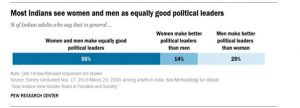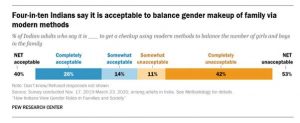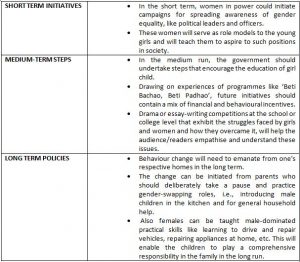DAILY CURRENT AFFAIRS (APRIL 19, 2022)
THE SOCIAL ISSUES AND SOCIAL JUSTICE
1. ADIVASIS, DALITS, MUSLIMS HAVE LOWER LIFE EXPECTANCY THAN HIGHER-CASTE HINDUS, STUDY REVEALS
THE CONTEXT: The study published in the Proceedings of the National Academy of Sciences of the United States of America (PNAS), in March 2022, is authored by experts affiliated with the Research Institute for Compassionate Economics, a non-profit organisation focused on health and well-being in India.
HIGHLIGHTS OF THE REPORT:
- The report highlighted the impact of discrimination and social exclusion on health disparities. Adivasis have a life-expectancy over four years lower, Dalits more than three years lower and Muslims almost a year lower than that of upper-caste Hindus, according to the study.
- The relatively smaller gap between life expectancy of Muslims and higher-caste Hindus is largely due to lower exposure to open defecation among Muslim children, lower rates of cervical cancers among Muslim women, lower consumption of alcohol and fewer suicide.
- The difference in life expectancy of Dalits and Adivasis in comparison to higher-caste Hindus is “comparable to the Black-White gap in the US in absolute magnitude”.
- The study assessed data from India’s Annual Health Survey, 2010-2011, focusing on nine states — Assam, Bihar, Chhattisgarh, Jharkhand, Madhya Pradesh, Odisha, Rajasthan, Uttar Pradesh and Uttarakhand — representing 48.5 per cent of India’s population.
- The impact of social exclusion as a result of one’s religion, caste or indigenous group on health and access to healthcare is an under explored topic in low- and middle-income countries (LMIC).
- Also, the report noted, “Patterns of disparities may be distinct in LMICs because population health is poorer, social safety nets are less robust, health care is less accessible and mortality risk-factors differ”. Thus, bridging the gap is essential.
- Life expectancy of upper-caste Hindus in the nine states was higher than the all-India life expectancy in 2010. Moreover, the same indicator for Adivasis and Dalits “are lower than those observed for all of India in 1996-2000, more than ten years before the survey.”
- The study also found a marginal difference in life expectancy based on sex. Life expectancy of Adivasi men was five years lower and of Adivasi women four years lower than higher-caste Hindus, the data showed. There was no difference in life expectancy between Dalit women and men.
- Among the nine states, Assam recorded the highest life expectancy for the Adivasi population, while Madhya Pradesh recorded the lowest, said the report. “The Dalit population recorded the highest life expectancy in Jharkhand and the lowest in Uttar Pradesh. For the Muslim population, life expectancy was the highest in Rajasthan and lowest in Uttar Pradesh.
THE ENVIRONMENT, ECOLOGY AND CLIMATE CHANGE
2. NEW SHRIMP SPECIES DISCOVERED OFF LAKSHADWEEP
THE CONTEXT: Scientists from the ICAR-National Bureau of Fish Genetic Resources (NBFGR), focused on documentation of aquatic genetic resources with special attention on fish and shell fish resources, have discovered a new species of shrimp, which has been named Actinimeneskoyas.
THE EXPLANATION:
- The species was collected at a depth of 1.0–2.0 m from the coral atoll of Agatti Island.
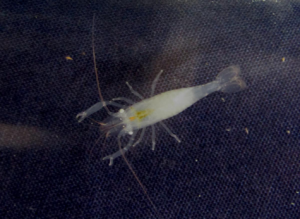
- This new species has been named ‘Koyas’ to honour the local community on the Lakshadweep islands as Koyas form an important ethnic community on the islands, who have made a significant contribution to the development and preservation of the heritage of the society.
- The newly discovered species is closely related to some other shrimp species in morphological traits. The new species is easily distinguished from the other species by the structural variation in the fourth sternal plate with a median notch.
- NBFGR has been conducting many exploratory surveys off the Lakshadweep islands with special focus on fish and shrimp species. The studies have revealed great diversity of symbiotic communities, which mostly comprise colourful and undescribed shrimp species.
Recent Findings:
- Recently, NBFGR scientists had discovered new shrimp species – Periclimenellaagattii (2019) named after the Agatti island and Arabianensis (2020) named after the Arabian Sea.
- NBFGR sources said reef-associated living fauna in these regions were important components of the marine biodiversity, which is home to a great variety of underwater habitats.
Value Addition:
- Lakshadweep is a tropical archipelago of 36 atolls and coral reefs in the Laccadive Sea, 280 km to 480 km off the coast of Kerala. 11 are inhabited.
- But currently, there are 35 islands, as the Parali 1 island submerged in water due to sea erosion.
- Lakshadweep means “one lakh islands” in Malayalam, the official as well as the widely spoken native language in the territory. Fishing is the most important industry.
- The islands form the smallest union territory of India and their total surface area is just 32 km square.
- Kavaratti serves as the capital of the Union Territory and the region comes under the jurisdiction of Kerala High Court. It is a uni-district Union Territory.
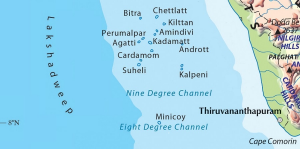
THE ECONOMIC DEVELOPMENTS
3.WHOLESALE PRICE INFLATION ACCELERATED TO 14.55% IN MARCH 2022
THE CONTEXT: According to the government data, the India’s annual wholesale price-based inflation accelerated to a record 14.55% in March from the previous month’s 13.11% in the wake of higher fuel prices.
THE EXPLANATION:
- According to data released by the Commerce Ministry, the country’s inflation based on the Wholesale Price Index (WPI) accelerated to 13.11% in February as compared to the 12.96% increase in January 2022. WPI was 4.83% in February 2021. High WPI inflation is seen as a precursor to higher consumer prices as producers pass on rising costs to their customers.
- According to the Office of the Economic Adviser, Department for Promotion of Industry and Internal Trade, the high inflation this March was attributed ‘primarily to rise in prices of crude petroleum and natural gas, mineral oils, basic metals, etc. owing to disruption in global supply chain caused by Russia-Ukraine conflict’.
- Manufactured products inflation moved up from 9.84% to 10.71%. However, the month-on-month change in the index for manufactured goods was sharper at 2.31%.
About Wholesale Price Index (WPI):
- Measures inflation at the first stage of the transaction, i.e. wholesale prices.
- Compiled by the Office of Economic Advisor, Ministry of Commerce & Industry.
- The Wholesale Price Index measures inflation on a year-on-year basis.
- It consists of 3 major groups as below:

4. RBI ‘STATE OF THE ECONOMY’ REPORT
THE CONTEXT: According to the RBI’s monthly ‘State of the Economy’ report, war in Ukraine continues to vex the global supply chain and inflate prices of goods and commodities, the Indian economy is not expected to remain immune from the negative global conditions
THE EXPLANATION:
- India is facing high inflation, widening trade deficit and foreign portfolio investment outflow, the central bank added. These conditions are expected to hamper growth and lead to ‘rocketing inflation’.
- “Emerging market economies are bracing up to contend with swift shifts in risk sentiments and tightening of global financial conditions that could produce real economy consequences which may thwart incipient recoveries or even precipitate rocketing inflation and economic downturns.
- Prices of crude oil prices rocketed to a 14-year high of $133 per barrel in the first week of March 2022, prices of base metals such as nickel, palladium and aluminium, for which Russia is a key exporter, have surged and prices of food items such as edible oil and cereals have also been pinched hard in last two months, following the war. The impact has been felt across the board impacting countries such as the United States, United Kingdom, Brazil, India and Russia.
- The RBI said global growth outlook has also been cut due to ongoing conflict in Eastern Europe. Even if the war ends, the imposed sanctions on Russia and the supply chain disruptions will last through this year (2022). This has resulted in organizations like the United Nations Conference on Trade and Development and the Organization for Economic Co-operation and Development to cut global GDP by 1 per cent.
- It also noted that “India faces these challenges with improving fundamentals and strong buffers. Going forward, spurring private investment remains a key thrust area for sustaining growth on a durable basis.
THE INTERNAL SECURITY
5. MEGHALAYA TRIBAL COUNCIL OPPOSES BORDER DEAL WITH ASSAM
THE CONTEXT: A tribal council in Meghalaya has joined the list of individuals and organisations in opposing the State government’s deal with Assam to resolve a 50-year-old boundary dispute.
THE EXPLANATION:
- The Assam and Meghalaya governments had on March 29, 2022, finalized the pact to divide 36.79 sq. km of disputed areas. The two governments had taken up six of 12 disputed sectors in the first phase of discussions.
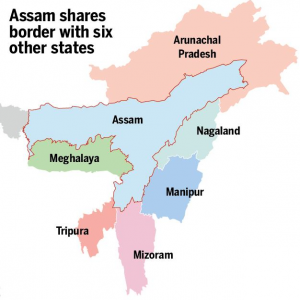
- The Khasi Hills Autonomous District Council (KHADC) claimed that the dispute areas belong to private parties and the Meghalaya government has neither the authority nor the right to hand them over to Assam.
- The KHADC is one of three tribal councils in Meghalaya created under the Sixth Schedule of the Constitution. Each of them functions as a government within a specified territory.
- Apart from the KHADC, some traditional institutions such as Hima (a Khasi state) and villagers not keen on being tagged with Assam have threatened to go to court if the Meghalaya government cannot review the boundary deal.
- The Meghalaya government has said agreement, based on a list of disputed sectors submitted to Assam in 2011, cannot be revisited. The deal remains to be ratified by Parliament and the Assemblies of the two States concerned before the boundary is redrawn.
- The residents of two border villages –Malchapara and Salbari– have said they will not give up without a fight. They fear they will lose the tribal rights if they are separated from Meghalaya.
Value Addition:
Border Disputes among states
Assam-Mizoram:
- Mizoram borders Assam’s Barak Valley, and both border Bangladesh. The boundary between the two states, which runs 165 km today, has a history dating back to the time when Mizoram was a district of Assam and known as Lushai Hills. Boundary demarcations in 1875 and 1933, particularly the second one, are at the heart of the dispute.
- The 1875 demarcation, notified on August 20 that year, derived from the Bengal Eastern Frontier Regulation (BEFR) Act, 1873. It differentiated Lushai Hills from the plains of Cacharin Assam’s Barak Valley. This was done in consultation with Mizo chiefs, and it became the basis for the Inner Line Reserve Forest demarcation in the Gazette.
Assam-Arunachal Pradesh
- The boundary issue between Assam and Arunachal is as ancient as the reign of the Ahom Kings who ruled Assam till the British annexed Assam in 1826. Encroachments by residents across the 804-km border that Assam shares with Arunachal Pradesh have led to rising tensions occasionally. A suit has been pending in Supreme Court since 1989 on the issue. Border Roads Organisation has marked Kim in Arunachal Pradesh as part of Assam by mistake.
Assam-Nagaland
- Assam and Nagaland share a 434-km border and the disputes relate to 66000 Sq Km of land mostly along the Sivasagar district of Assam. The two states have been disputing their shared border ever since Nagaland was carved out of Assam’s Naga Hills district. While Assam wants the status quo and sticks to the border decision taken on December 1, 1963, Nagaland demands all Naga territories be transferred to the state. Claiming that all Naga territories belong to them, Nagaland wants restoration of land-based on a 16-point agreement of 1960, which led to the creation of the state.
Assam-Meghalaya
- Meghalaya shares its internal border only with Assam and there are disputes along the 733 km border at 12 places. The border row between both States started with the formation of states under the North-Eastern Areas (Reorganisation) Act, 1971. As per the Act, Blocks I and II of the Mikir Hills—presently, the Karbi Anglong district—were granted to Assam. Meghalaya claims that both these blocks were part of the erstwhile United Khasi and Jaintia Hills when it was created in 1835.
THE PRELIMS PERSPECTIVE
6. THE NUBIAN CIVILIZATION
THE CONTEXT: Recently, archaeologist excavated a circular mounds of rocks dot the desert landscape at the archaeological site of Tombos in northern Sudan. They reveal tumuli – the underground burial tombs used at least as far back as 2500 B.C. by ancient inhabitants who called this region Kush or Nubia.
THE EXPLANATION:
- The remains of the ancient inhabitants of Tombos reveal information about their physical activity, as well as infection and nutrition. Conditions such as heart disease, cancer and the effects of hard labor all leave marks on the human body that provide insights into the epidemiology of disease in the past.
Value Addition:
- Nubia is a region along the Nile River located in the northern Sudan and southern Egypt. It was one of the earliest civilizations of ancient Northeastern Africa, with a history that can be traced from at least 2000 BCE and was home to one of the African empires.
- Before the 4th century, and throughout classical antiquity, Nubia was known as Kush, or, in Classical Greek usage, included under the name Ethiopia (Aithiopia). With the disintegration of the New Kingdom around 1070 BCE, Kush became an independent kingdom centered at Napata in modern central Sudan.
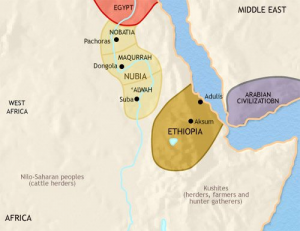
THE PRELIMS PRACTICE QUESTIONS
QUESTION OF THE DAY
Q. The Char Chinari Island is sometimes recently seen in the news?
- The iconic island Char Chinari in the middle of the Wular Lake.
- It is a large, deciduous tree known for its longevity and spreading crown.
- It is a coral island found in Lakshadweep.
- It is a disputed island between India and Bangladesh.
ANSWER FOR 18TH APRIL 2022
Answer: B
Explanation:
- Palamau Tiger reserve – Jharkhand
- Valmiki Tiger Reserve – Bihar
- Satkoshi Tiger Reserve – Odisha
